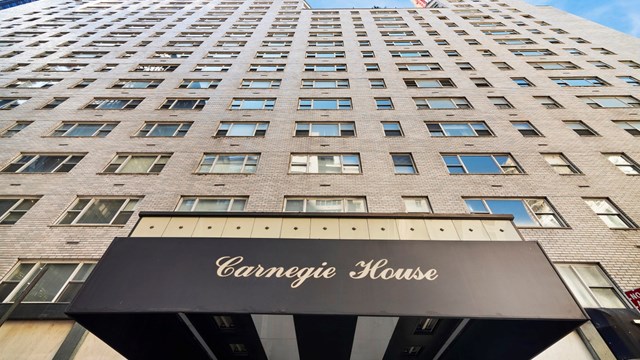Alan Greenspan and the Open Market Committee of the Federal Reserve have received a lot of press coverage recently for their aggressive attempts to revive the economy and ward off a recession. Their unprecedented program of mostly half-point cuts has reduced the discount rate (the rate certain banks pay to borrow funds from the Federal Reserve to meet their daily capital requirements) from six to 3.25 percent since the beginning of this year. Most banks have followed suit by lowering their prime lending rate (the rate these banks supposedly charge their very best customers) from 9.5 to 6.75 percent over the same period.
Market-wide Effects?
Have these downward trends been reflected in the mortgage market? Not really. That probably sounds strange in light of all of the downward pressure being applied by Greenspan & Co. However, today’s mortgage lenders use Treasury rates as their guide, not the discount rate or prime rate, to price their loans. Interest rates on new loans are based on the Treasury market, either directly through an index-plus-spread formula, or indirectly through an internal cost-of-funds calculation. However, regardless of how they price their loans, most mortgage lenders are influenced more by the market’s opinion of what the Fed should have done than by what the Fed actually did.
An inevitable effect of the Fed’s changes will be an eventual drop in the cost of borrowing. Unfortunately, very few sectors of the economy are growing fast enough to need or want new debt. Instead, many companies are downsizing their staffs, cutting expenses, eliminating lower-margin products, and struggling to pay down the large loans they accumulated during the "irrational exuberance" of the 1990s boom. The contraction in business activity appears to be widespread, leading some economists to suggest that the U.S. economy already has slumped into recession, and that Alan Greenspan should reduce rates further to limit the severity of the downturn. If evidence grows that these market-watchers are correct, additional Fed stimulus becomes more likely.
However, other economists point to rising oil prices, the California energy crisis, a tight labor market, maxed-out industrial capacity, and stubbornly-high consumer confidence as support for their argument that the economy still has "legs" and that inflation is just around the corner. Those who subscribe to this scenario suggest that the Fed already has done too much and, therefore, should increase rates to avoid the looming inflationary spiral.
Mortgage Market Response
Does the mortgage market think that Alan Greenspan has made the right moves? Apparently, it’s still trying to decide. While some lending rates have declined, they have not followed the Fed’s downward lead completely. Wall Street now views the 10-year U.S. Treasury rate as the "benchmark" or principal indicator for the entire Treasury market. Consequently, most mortgage lenders use the rate on the most-recently issued ten-year treasury note as their index for pricing new mortgage loans.
While Greenspan lopped short-term rates by 275 basis points (2.75 percent) during the first six months of this year, the benchmark ten-year Treasury rate rose by 22 basis points (0.22 percent). Since January, that important index has traded within a relatively narrow range of 77 basis points (0.77 percent). Adding to the confusion, spreads (the increments that lenders add to the treasury rate to determine loan rates) have bounced up and down as well, often moving inversely with treasury rates. Depending on which "expert" you talk to, rates and spreads are headed up, down, or sideways. In the face of such uncertainty, is now a good time to refinance your cooperative’s underlying mortgage? The answer-as with most important questions- is that it depends.
As far as interest rates are concerned, now is at the "better" end of the timing spectrum. To draw this statement into perspective, a little history might be helpful. Back in the mid-1950s, the ten-year Treasury traded around three percent. Later, during the early 1980s, it broke above 14 percent! Over the last three years, the ten-year Treasury declined to 4.15 percent (October 1998) and climbed to 6.78 percent (January 2000). It began this year at 5.11 percent, traded between 4.72 percent (March) and 5.49 percent (May), and closed at 5.33 percent by mid-year. Therefore, as far as interest rates go, now is a relatively favorable time to refinance.
For now, many co-op boards seem to agree most mortgage lenders are swamped with business. However, the current level of interest rates should not be the only factor that determines whether your co-op should refinance its underlying mortgage. Present cash needs, planned capital improvements, prudent reserves, the age of your building, current maintenance charges versus those in neighboring properties, and many other issues should be considered carefully before embarking on the expensive and time-consuming process of refinancing your cooperative’s underlying mortgage.
Plus, the current backlog at most lenders means that loan officers will not be as receptive as they might otherwise be. It also means that your loan application will take longer to process and close. Nonetheless, you can improve your chances by being prepared, organized, responsive, polite, and patient. Remember, good things are worth waiting for.
Successful Refinancing
If your cooperative decides to refinance its underlying mortgage, you can insure success by following these four steps:
1. Rely on your professional team.
Refinancing often is cited as the most important decision that a co-op’s board of directors will make. As such, it should be made very carefully, with input from all of the co-op’s professional advisors. The co-op’s managing agent, accountant, and attorney can help the board decide whether and when refinancing makes sense. If the decision is to proceed, this professional team can help identify and prioritize the board’s objectives. They also can recommend a loan structure that is both appropriate for the building’s physical and financial condition and consistent with the board’s objectives. Involving an experienced mortgage broker at this critical stage adds specific experience, provides up-to-the-minute market information, and often produces significant savings in both time and money throughout the process. However, whether you choose to hire a mortgage broker or not, starting your loan search before the board and its team of professional advisors has completed this crucial planning step is one of the biggest mistakes a co-op can make.
2. Gather the facts.
Refinancing an underlying mortgage is a very complex financial decision that requires lots of information. Since most lenders request roughly the same documentation, you can accelerate your application if you assemble and organize your co-op’s records before contacting any lenders. (See inset for a useful refinancing checklist.)
3. Buy the package, not the parts.
Be prepared for the fact that your co-op may not be able to get everything the board wanted in its new mortgage. However, the priorities established in Step 1 (planning with the help of the board’s professional team) will guide the board to the best "package deal." Board members should park their egos and avoid loans that may satisfy lesser wants but cost the co-op dearly over the life of the new loan.
4. Stay focused.
Refinancing takes about 90 days… if everyone stays focused, that is. Remember, today’s loan officers are very busy. Therefore, they expect quick answers to questions, prompt appointments for inspections, and diligent attention from borrowers’ attorneys. If you and your professional team respond in a timely manner, your loan will go smoothly. If you don’t, your application likely will fall behind all the others on the loan officer’s desk. Whenever that happens, you run the risk of an increase in interest rates, a change in loan terms, or (worse) a declined application. However, by keeping your eye on your goal and your foot on the accelerator, you will stay on track to a successful refinancing.
Boards who think that they can handle a refinancing on their own, or who think that lenders should rush to give them the loan of their dreams or who view mortgage brokeres as needless appendages may be taking on more than they can handle. A good refinancing can revive a sickly co-op and strengthen a healthy one. A bad refinancing can cripple any co-op. With the stakes so high, it truly pays to do it right.
Mr. Niland is president of First Funding of New York, Inc., a mortgage brokerage firm that has specialized in underlying mortgage loans and credit lines for cooperatives throughout the greater New York metropolitan area since 1987.







Leave a Comment